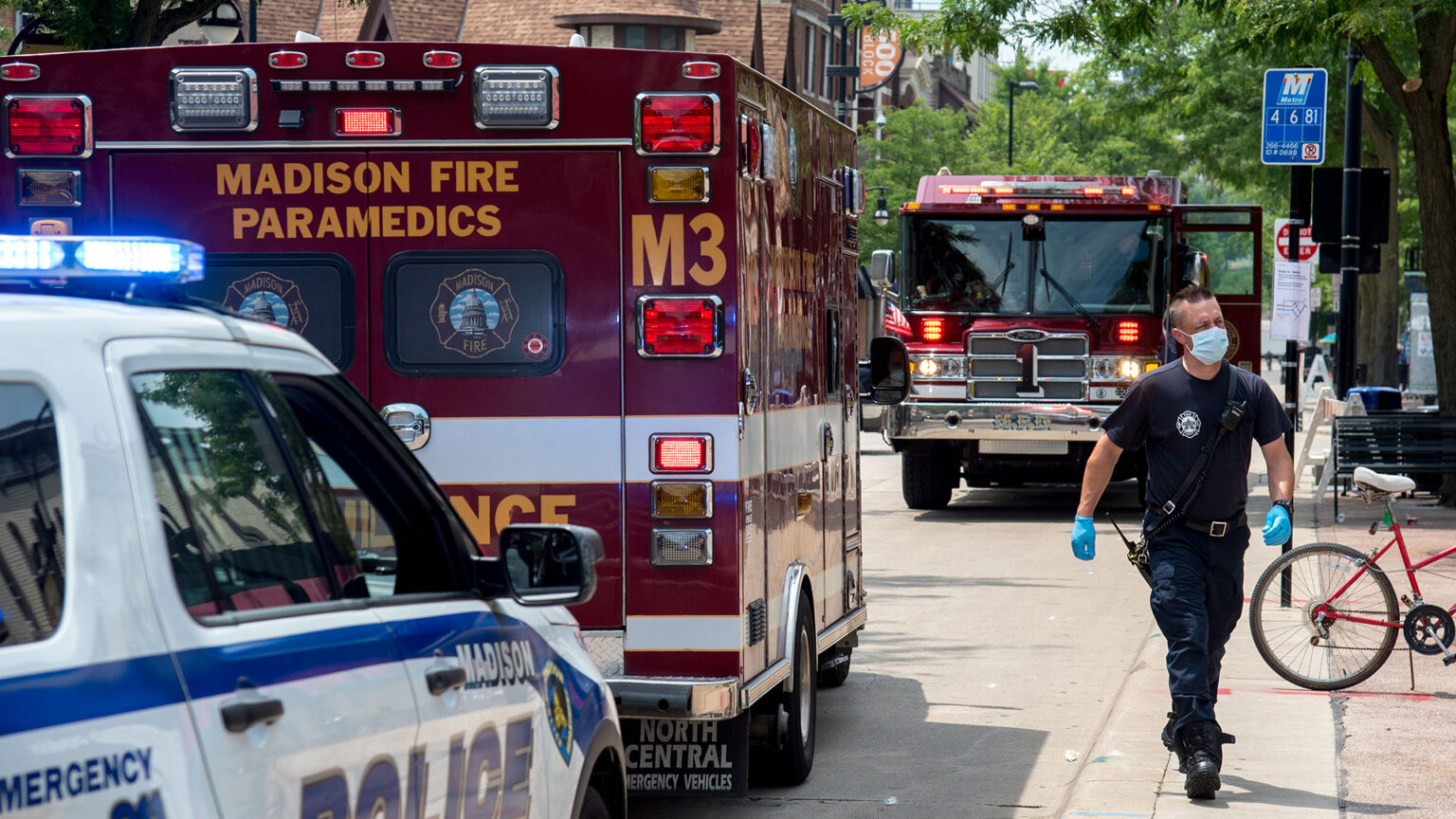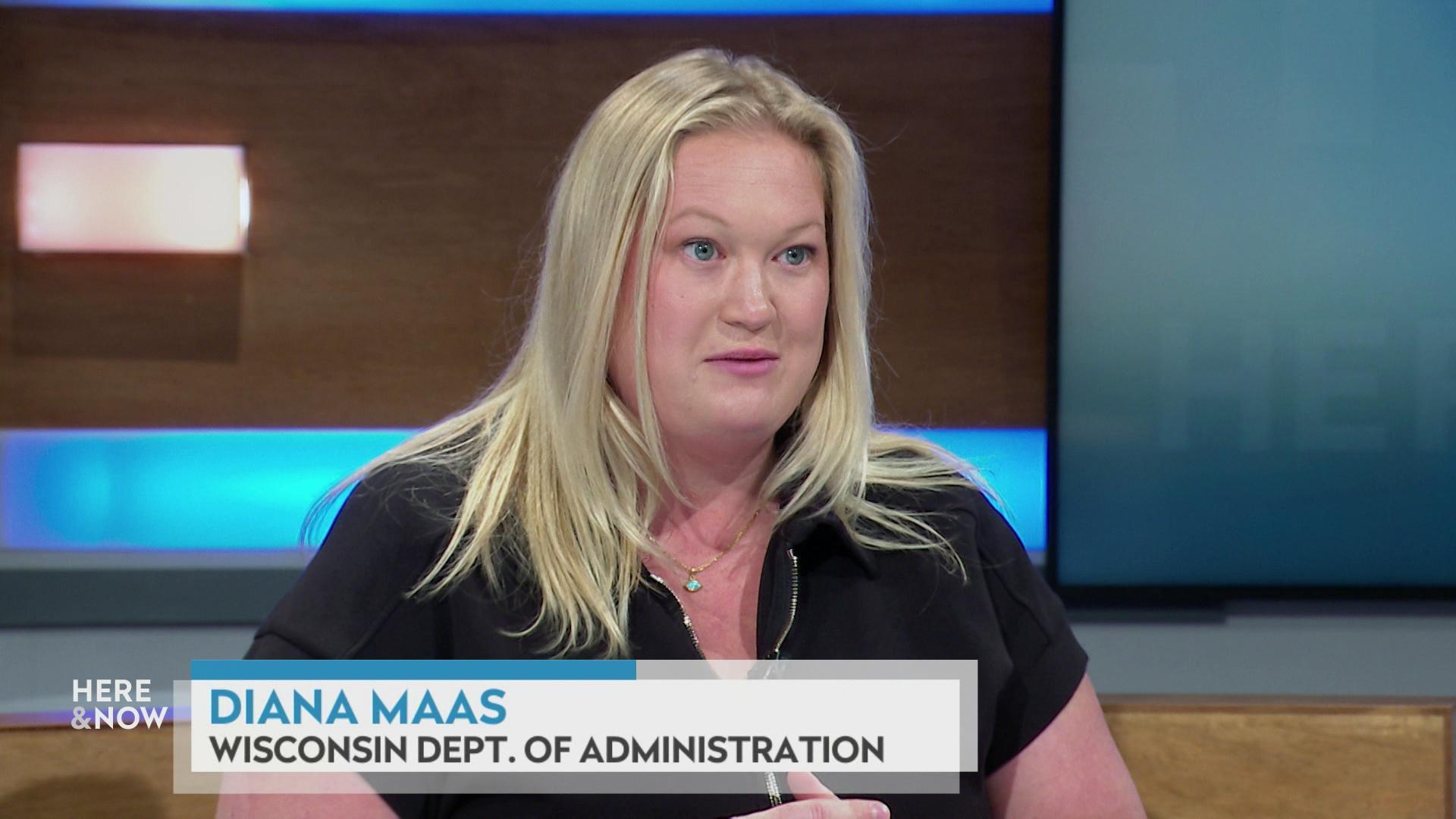Wisconsin to give out $300 million in grants to local governments to cut spending through consolidation, privatization
The Wisconsin Legislature deposited $300 million for state "innovation grants" to distribute to cities, villages, towns, counties and tribal nations that cut their spending levels by consolidating or privatizing local services related to fire departments, emergency medical response and other programs.
Wisconsin Watch
May 6, 2025

Emergency personnel respond to a scene in on State Street in Madison in 2020. (Credit: Will Cioci / Wisconsin Watch)

This story was produced and originally published by Wisconsin Watch, a nonprofit, nonpartisan newsroom.
As local governments across Wisconsin continue to wrestle with tight budgets, $300 million in state aid remains unspent.
That money could have provided a major boost to the $275 million in shared revenue increases that the Legislature approved in a historic overhaul of local government funding.
Instead, lawmakers deposited the $300 million for “innovation grants” to reward cities, villages, towns and counties that cut expenses by consolidating or privatizing services.
It’s an approach championed by Assembly Speaker Robin Vos, R-Rochester, who at one point wanted to reserve $1 billion for the incentive payments, legislative records show. Senate President Mary Felzkowski, R-Tomahawk, says she expects the state’s smallest communities will benefit most from the plan.
But Democrats say the money could have been better used as part of the main shared revenue distribution than in what Sen. Kelda Roys, D-Madison, calls “a set-aside slush fund.”
Act 12, the landmark 2023 local government legislation, increased shared revenue allocations to counties and municipalities throughout the state. Yet even though that cash infusion helped many communities, dozens are still calling referendums to seek voter approval to raise property taxes beyond state levy limits.
Under Act 12, the innovation fund will pay financial incentives to cities, villages, towns, counties and Native American tribes that successfully present proposals to contract with each other to share services or to hand them off to a business or nonprofit organization. Each agreement needs to cut costs by at least 10%, and the state Department of Revenue will give top priority to plans that save money on law enforcement, firefighting and emergency medical response, without jeopardizing service.
The Revenue Department expects applications for those grants will be available in July.
A related $3 million program provides planning grants to communities of less than 5,000 residents to prepare their proposals for the main innovation grants. To date, $1.7 million has been distributed in three rounds to 58 local governments, many of which received more than one of the 98 grants. With nearly half the allocation unspent, the application deadline was extended to April 30, adding two more rounds.
Proposals to combine fire departments and emergency medical services dominate the planning grants awarded so far. Others focus on sharing police, public works and administrative services.
A Vos spokesperson didn’t respond to requests for an interview. But legislative drafting notes indicate he championed the innovation fund — and even wanted it to be more than triple its final size.
“I just talked to the Speaker. He wants to put the whole billion in the first year” of the state’s fiscal biennium, says an email from an aide to Rep. Tony Kurtz, R-Wonewoc, who co-authored Act 12, to legislative staff working on the bill.
During the discussions that led to Act 12 — and for years beforehand — Vos repeatedly questioned whether the city of Milwaukee and Milwaukee County were spending taxpayer money wisely. He urged them to do more to share and privatize services.
Mayor Cavalier Johnson and County Executive David Crowley responded with lengthy lists of how much their governments already had done to cut expenses and share services. The city’s list included establishing a joint recycling center with Waukesha County; reaching mutual aid agreements with suburban fire departments; contracting to take over fire and emergency medical protection for West Milwaukee; and privatizing snow removal at bus stops.
But none of that qualifies for an innovation grant. Act 12 specifies the grants are only for deals taking effect after Nov. 13, 2024, not for any previous moves by local governments.
Felzkowski said she thought the innovation fund would help small rural towns and villages consolidate services. In addition to merging fire departments, she suggested they might find efficiencies by sharing human resources and information technology staff. Sen. Mark Spreitzer, D-Beloit, said larger communities might benefit as well.
But Spreitzer questioned the fund’s emphasis on reducing overall costs instead of improving services. For example, if two or more communities wanted to share a fire chief and use the money saved to hire more firefighters, the state should encourage them to do that, he said.
Gov. Tony Evers’ office did not respond directly when asked what the governor thought of the fund.
While Roys said she is a “big believer in efficiency,” she also believes local governments should consolidate services only if it’s the right thing to do, not because they’re coerced into doing it.
The innovation fund is “kind of holding them over a barrel and forcing them to compete,” Roys said.
 Passport
Passport











Follow Us